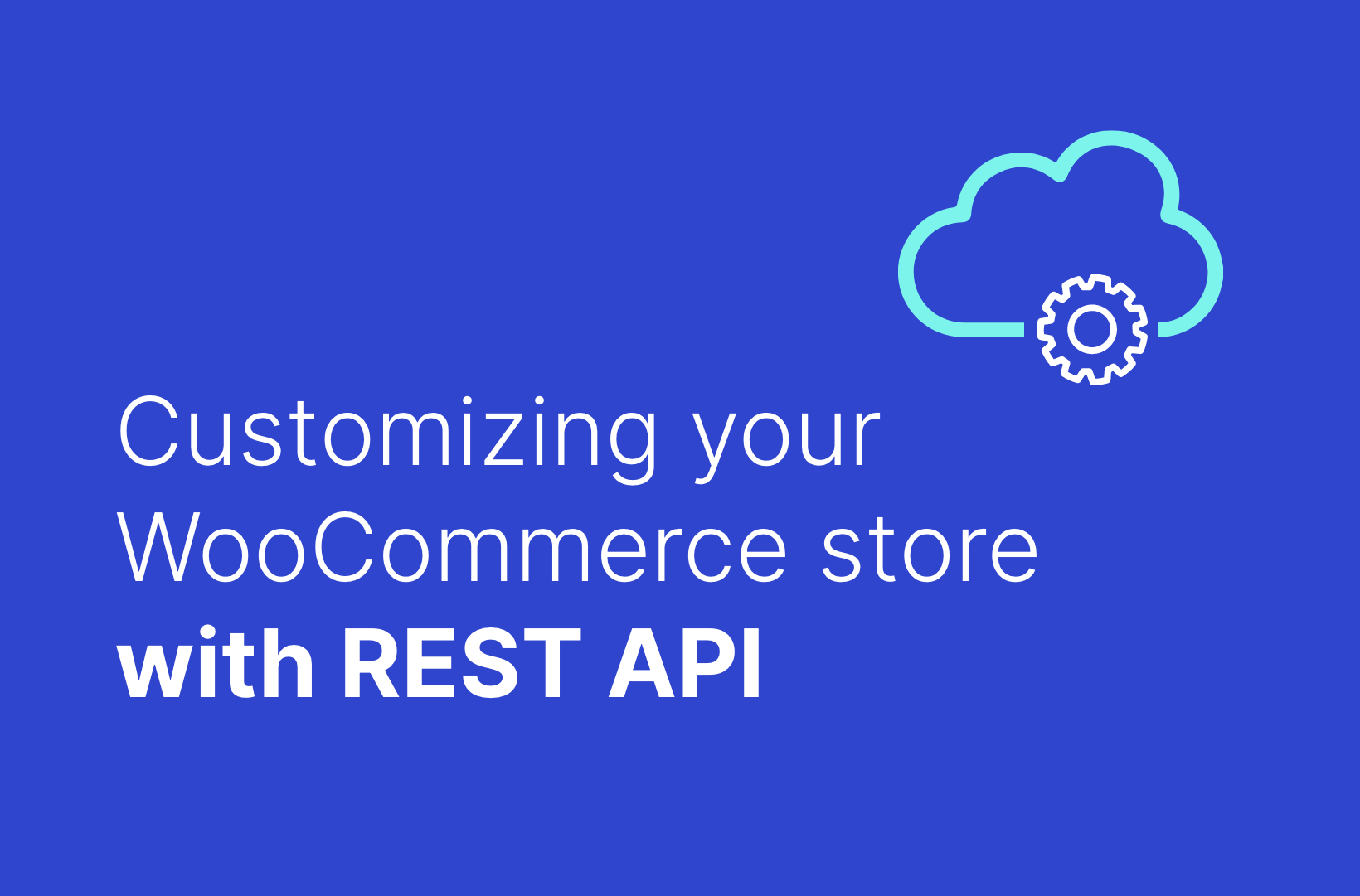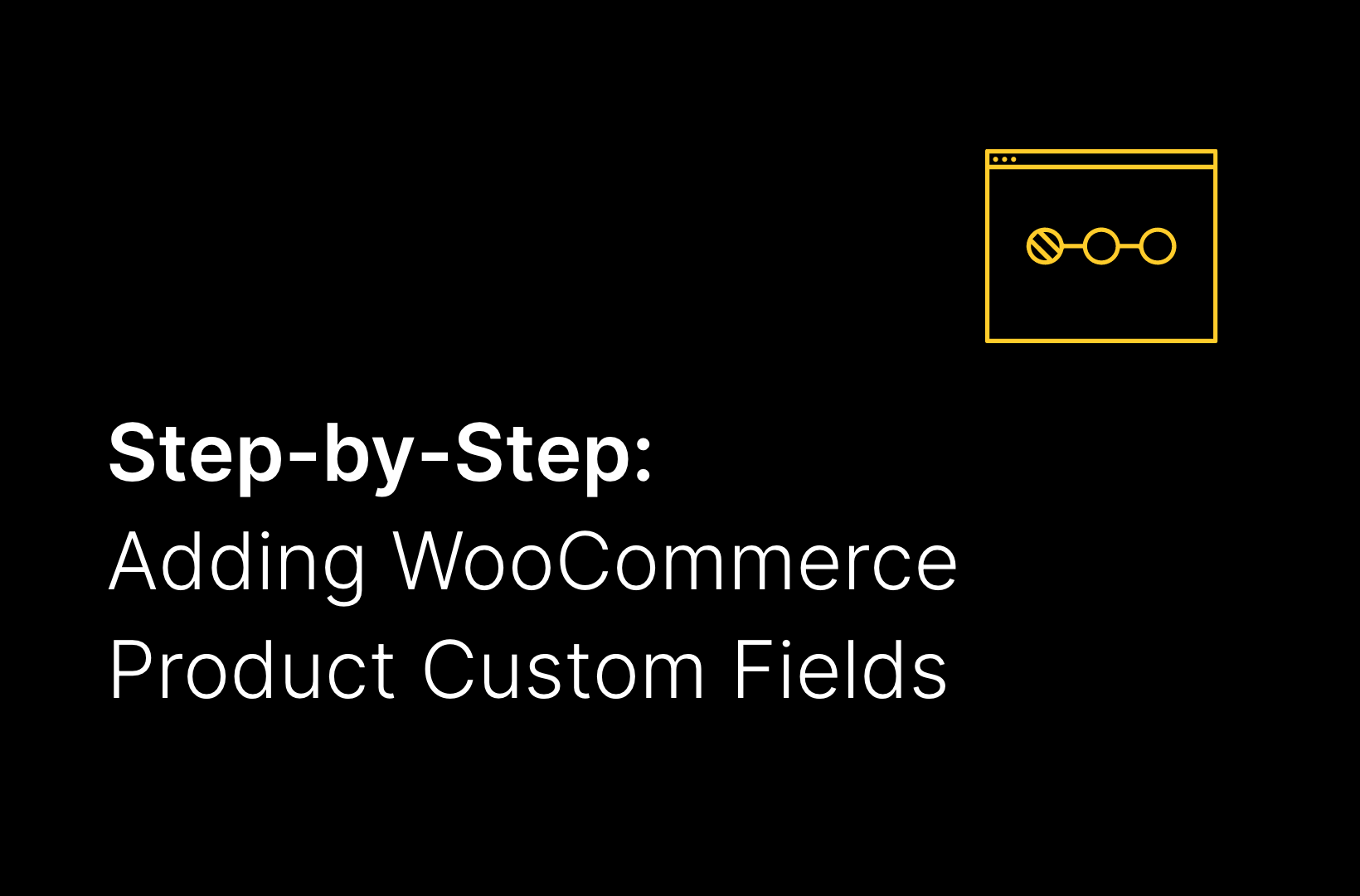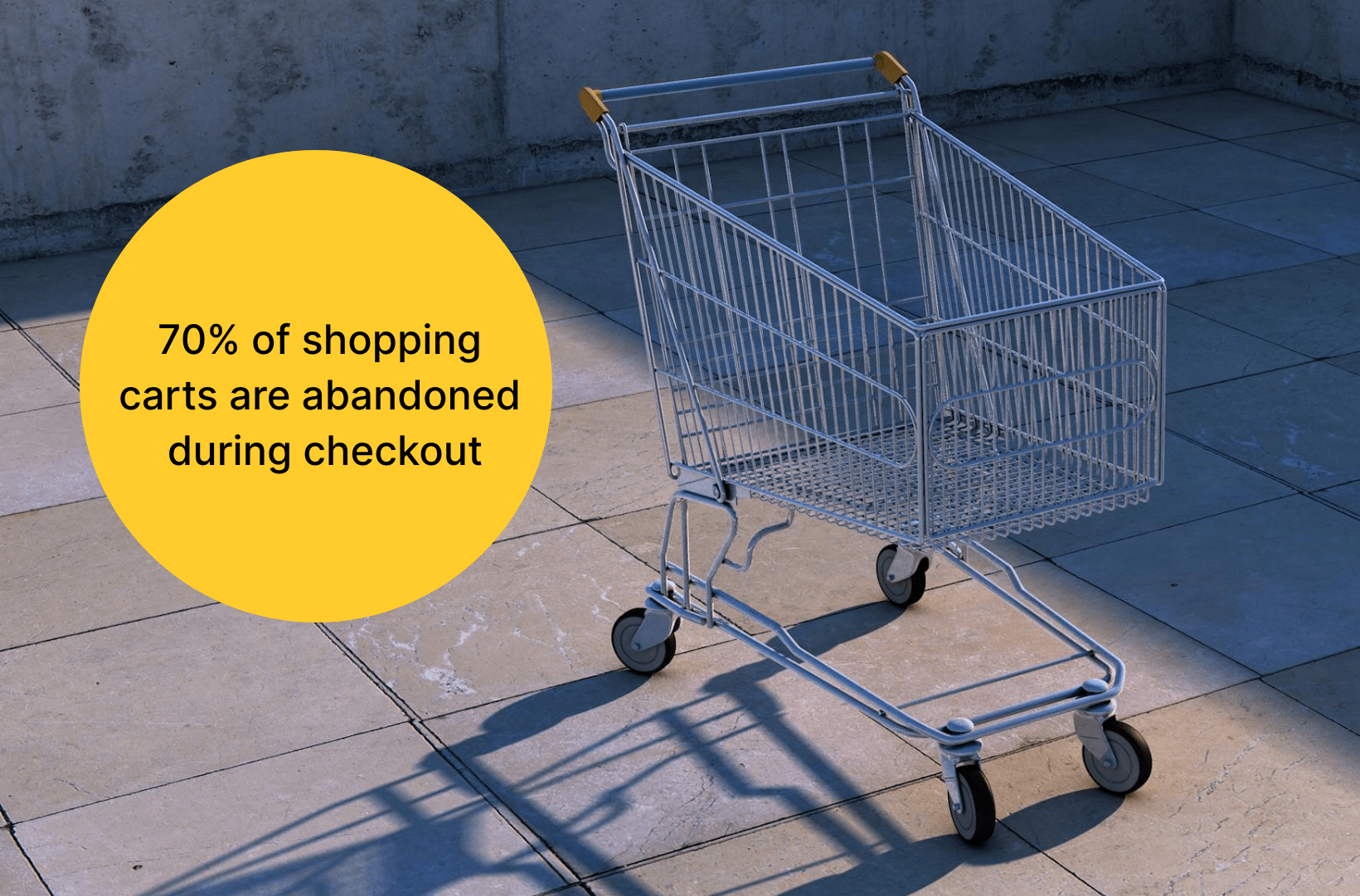Guide to Customizing Your Online Store with WooCommerce REST API

Few tools offer the versatility and power of the WordPress REST API when it comes to tailoring your WooCommerce store to your unique needs.
What exactly is this WordPress wizardry we speak of? Well, let’s break it down.
At its core, the WordPress API, particularly the RESTful variant, serves as the bridge between your website and the vast universe of digital possibilities. Within this framework, WooCommerce, renowned for its adaptability and widespread adoption, aligns seamlessly with the capabilities of the WordPress API.
Using WooCommerce with the WordPress API opens many doors. From streamlining payment processing to optimizing inventory management and establishing robust connections with external systems, the potential for enhancement is vast.
But, a heads up: this is extremely technical. We’re talking about an environment where rogue code lurks around every API endpoint. So, while we’re here to guide you through the wilderness, consider this your adventurer’s handbook rather than a stroll in the park.
With that foundation laid, let’s dive into the WooCommerce REST API. It’s time to level up your store!
The shift from the Legacy WooCommerce API to the modern WordPress REST API
With the upcoming release of WooCommerce 9.0 in June 2024, the Legacy REST API, which has been a part of WooCommerce since version 2.6.0, will be officially deprecated. This significant change marks a technical evolution from the Legacy WooCommerce API to the new WordPress REST API, a unified system introduced by WordPress to address pain points such as slower development timelines and difficulties with scalability.
The WordPress REST API offers several advantages over its legacy counterpart, including improved consistency, enhanced security protocols, and more efficient data handling. By facilitating a more seamless integration with current WordPress features, the modern API provides a robust option for expanding an online store’s functionality.
As a result of this deprecation, users who rely on the Legacy REST API will need to migrate to the current REST API to ensure their WooCommerce stores continue to function optimally. To aid in this transition, WooCommerce will provide a dedicated extension that includes the removed code, allowing users to maintain Legacy REST API access. Installing this extension will be crucial for businesses to ensure continuity and minimize disruption to their online operations.
How can you customize your Woo store with the WordPress REST API?
The WordPress REST API offers WooCommerce users a wide range of customization options to enhance the functionality and user experience of their online stores.
To better understand how the REST API works, it’s helpful to draw a parallel to webhooks, which have similar functionality in terms of automating workflows between WooCommerce and third-party apps. When events occur in WooCommerce, webhooks send data about these events to a specific URL provided by an external service.
In contrast, the REST API allows external applications to perform CRUD (Create, Read, Update, Delete) operations on WooCommerce resources such as orders, products, customers, and more. This enables store owners to customize their WooCommerce stores in various ways, such as:
Access and manage your WooCommerce store from other applications
The WordPress REST API enables users to interact with various aspects of their WooCommerce store, including products, orders, and customers, using external applications or services. This allows for programmatic management of store data, streamlining processes, and saving time. RESTful services utilize HTTP methods like GET, POST, PUT, and DELETE to manipulate WooCommerce resources.
For example, through the WordPress REST API, you can create new products, retrieve order details, or create new customer accounts without directly accessing the WooCommerce dashboard. This opens up possibilities for integrating WooCommerce with external systems, such as inventory management software, ERP systems, or customer relationship management (CRM) platforms.
Adding custom filtering and data sorting options
The WordPress REST API also allows store owners to customize how data is retrieved and displayed from their WooCommerce store. This includes implementing custom search filters, sorting criteria, and data manipulation to better serve their business needs and improve the customer experience.
For instance, you can use the REST API to retrieve products based on specific criteria, such as category or price range, sort orders by date or status, or filter customer data by location or purchase history. This level of customization enables you to present data in a way that is most relevant and useful for your store’s unique requirements.
Facilitates application development and integration
The WordPress REST API serves as a foundation for developing applications and integrating external services with WooCommerce, enabling developers to build custom solutions, extend functionality, and integrate with third-party platforms. This powerful tool allows businesses to streamline their operations and enhance their online store’s capabilities by connecting with various systems and services.
Some use cases include:
WooCommerce and CRM systems
One common example of integration is connecting WooCommerce with a Customer Relationship Management (CRM) system. By leveraging the REST API, businesses can automatically sync customer data between their online store and their CRM, ensuring that all customer interactions and purchase histories are centralized. This integration allows for more targeted marketing efforts and personalized customer experiences.
Custom checkout workflows
Another way the REST API facilitates application development is by enabling the implementation of custom checkout workflows. Developers can create unique checkout processes that cater to their business’s specific needs, such as incorporating multiple payment gateways, adding custom fields for gift-wrapping or delivery instructions, or integrating with a preferred shipping provider. This level of customization helps businesses stand out from competitors and provide a tailored experience for their customers.
WooCommerce mobile apps
The WordPress REST API also makes it possible to build mobile apps that interact seamlessly with a WooCommerce store. By utilizing the API endpoints, developers can create native iOS or Android apps that allow customers to browse products, place orders, and manage their accounts directly from their mobile devices.
This mobile-friendly approach can lead to increased customer engagement and higher conversion rates as more and more consumers prefer to shop using their smartphones or tablets.

Basic overview of how the WooCommerce API works
Let’s now walk you through the fundamental steps of how the WooCommerce API works, providing you with a solid foundation to explore its capabilities further. At this stage, we won’t bombard you with technical jargon or complex concepts. Instead, we’ll take you through the key stages of interacting with the WooCommerce API. Let’s begin!
Choose the authentication method
Authentication is like a bouncer at an exclusive club. Without the right credentials, you’re not getting in. With WooCommerce API, there are two main authentication keys: Secret keys and Consumer keys.
REST API keys: Secret keys and Consumer keys
- Secret keys are like the secret handshake between your store and the API. They’re tucked away in the backend, ensuring that only authorized parties can access sensitive information.
- Consumer keys, on the other hand, are like your VIP pass. They identify who’s making the request and what they’re allowed to do.
Together, these keys form the ironclad gatekeeper of your store’s data, keeping the riff-raff out and your information safe.
Authentication over HTTPS
Using HTTPS is like wrapping your API interactions in a protective bubble, shielding your sensitive data from prying eyes during transit.
By using HTTPS as the foundation of your API interactions, you ensure that your data remains secure as it travels between your client and your WooCommerce store. It’s like adding an extra layer of armor, protecting your valuable information from potential threats.
Choosing the right authentication method and prioritizing security with HTTPS are two ways to safeguard your data and ensure that only authorized users can access your WooCommerce store’s resources.
Choosing an API endpoint
When working with the WooCommerce REST API, it’s essential to understand the concept of API endpoints. These endpoints serve as access points for performing specific actions within your WooCommerce store. By selecting the appropriate endpoint, you can efficiently interact with various aspects of your online shop, such as managing products, processing orders, and handling customer data.
The WooCommerce REST API offers a wide range of endpoints, each designed to cater to specific business needs. Some of the most commonly used endpoints include:
- Products: The products endpoint allows you to create, retrieve, update, and delete product data. This is particularly useful when integrating with inventory management systems or synchronizing product information across multiple platforms.
- Orders: The orders endpoint enables you to manage and process customer orders programmatically. You can retrieve order details, update order statuses, and even generate invoices or packing slips using this endpoint.
- Customers: The customers endpoint facilitates the management of customer data. You can create new customer accounts, retrieve customer information, and update customer details using this endpoint. This is especially handy when integrating with CRM systems or personalizing the shopping experience based on customer preferences.
When selecting an API endpoint for a specific task, it’s crucial to align your choice with your business goals. Consider the following tips:
- Identify the core functionality you want to achieve through the API integration. Do you need to sync product data, automate order processing, or personalize customer interactions?
- Review the available endpoints and their corresponding documentation to determine which one best suits your requirements. Each endpoint has its own set of supported operations and parameters.
- Consider the scalability and performance implications of your chosen endpoint. Some endpoints may be more resource-intensive than others, so it’s important to select one that aligns with your store’s traffic and growth projections.
- Test the selected endpoint thoroughly before implementing it in your production environment. Ensure that it provides the desired functionality and integrates seamlessly with your existing systems and workflows.
Making an API request
To interact with your WooCommerce store using the REST API, you’ll need to construct a well-formed API request. A typical WooCommerce REST API request consists of three main components: the HTTP method, the endpoint URL, and the necessary headers.
The HTTP method determines the type of action you want to perform on a resource. The most common methods are:
- GET: Retrieves a resource or a collection of resources.
- POST: Creates a new resource.
- PUT: Updates an existing resource.
- DELETE: Removes a resource.
The endpoint URL specifies the resource you want to interact with, such as /products for managing products or /orders for handling orders. The base URL for WooCommerce REST API endpoints is https://your-domain.com/wp-json/wc/v3/.
Headers provide additional information about the request, such as authentication details and the content type. When making requests to the WooCommerce REST API, you’ll need to include the following headers:
- Content-Type: application/json to indicate that the request body is in JSON format.
- Authorization: Basic <base64-encoded key:secret> for authentication using your API keys.
To craft effective API requests, consider the following best practices:
- Utilize query parameters to filter, sort, or paginate results when retrieving collections.
- Provide all required fields in the request body when creating or updating resources.
- Handle errors gracefully by checking the response status code and providing meaningful error messages to users.
When it comes to handling parameters and body data, ensure that you:
- Use URL encoding for query parameters to avoid issues with special characters.
- Send request bodies in JSON format, with the appropriate Content-Type header.
- Validate and sanitize user input to prevent security vulnerabilities like SQL injection or cross-site scripting (XSS).
To ensure secure request handling, always use HTTPS for transmitting sensitive data. This encrypts communication between the client and server, protecting against eavesdropping and tampering.
Processing the API response
When you make a request to the WooCommerce REST API, the server will respond with an HTTP status code and, in most cases, a JSON-formatted response body. Understanding these status codes and the structure of the JSON response is crucial for effectively handling the data returned by the API.
Interpreting HTTP status codes
The WooCommerce REST API returns standard HTTP status codes to indicate the success or failure of a request. Some common status codes you may encounter include:
- 200 OK: The request was successful, and the response body contains the requested data.
- 201 Created: The request was successful, and a new resource was created as a result.
- 400 Bad Request: The request was malformed or missing the required parameters.
- 401 Unauthorized: The request requires authentication, or the provided authentication credentials are invalid.
- 404 Not Found: The requested resource does not exist.
- 500 Internal Server Error: An unexpected error occurred on the server while processing the request.
Handling common errors and issues
When working with the WooCommerce REST API, you may encounter various errors or issues. Some common problems and their initial troubleshooting steps include:
- Authentication errors: Double-check your API keys and ensure that they have the correct permissions for the action you are attempting. Verify that your server is correctly passing authentication headers.
- Malformed requests: Ensure that your request URL is properly formatted and includes all required parameters. Check that your request payload adheres to the expected JSON structure.
- Resource not found: Confirm that the resource you are requesting exists and that you are using the correct endpoint URL. Verify that any dynamic parameters (e.g., product or order IDs) are valid.
If you encounter persistent issues, consult the official WooCommerce REST API documentation or seek assistance from the WooCommerce community forums.
Leverage Saucal’s expertise for your WooCommerce API needs
WooCommerce API has the power to customize and enhance your online store. But let’s face it – navigating the intricacies of API integrations can be like wandering through a maze without a map, especially if you’re not a developer.
That’s where Saucal comes in. As a team of Platinum-certified WooExperts, we specialize in harnessing the full potential of WordPress REST API for WooCommerce customizations. Whether you’re looking to streamline your payment processing, optimize inventory management, or integrate with external systems, we’ve got the expertise to make it happen.
With Saucal, you can rest easy knowing that your WooCommerce API needs are in capable hands. We offer continuous management and optimization, ensuring that your store stays ahead of the curve and mitigating any troubles associated with API changes or updates.
 Book now, build later. Lock in 20% OFF projects over $10K when you book by Dec 31.
Book now, build later. Lock in 20% OFF projects over $10K when you book by Dec 31.  Start 2026 focused, stress-free, and ready to grow.
Start 2026 focused, stress-free, and ready to grow. 


